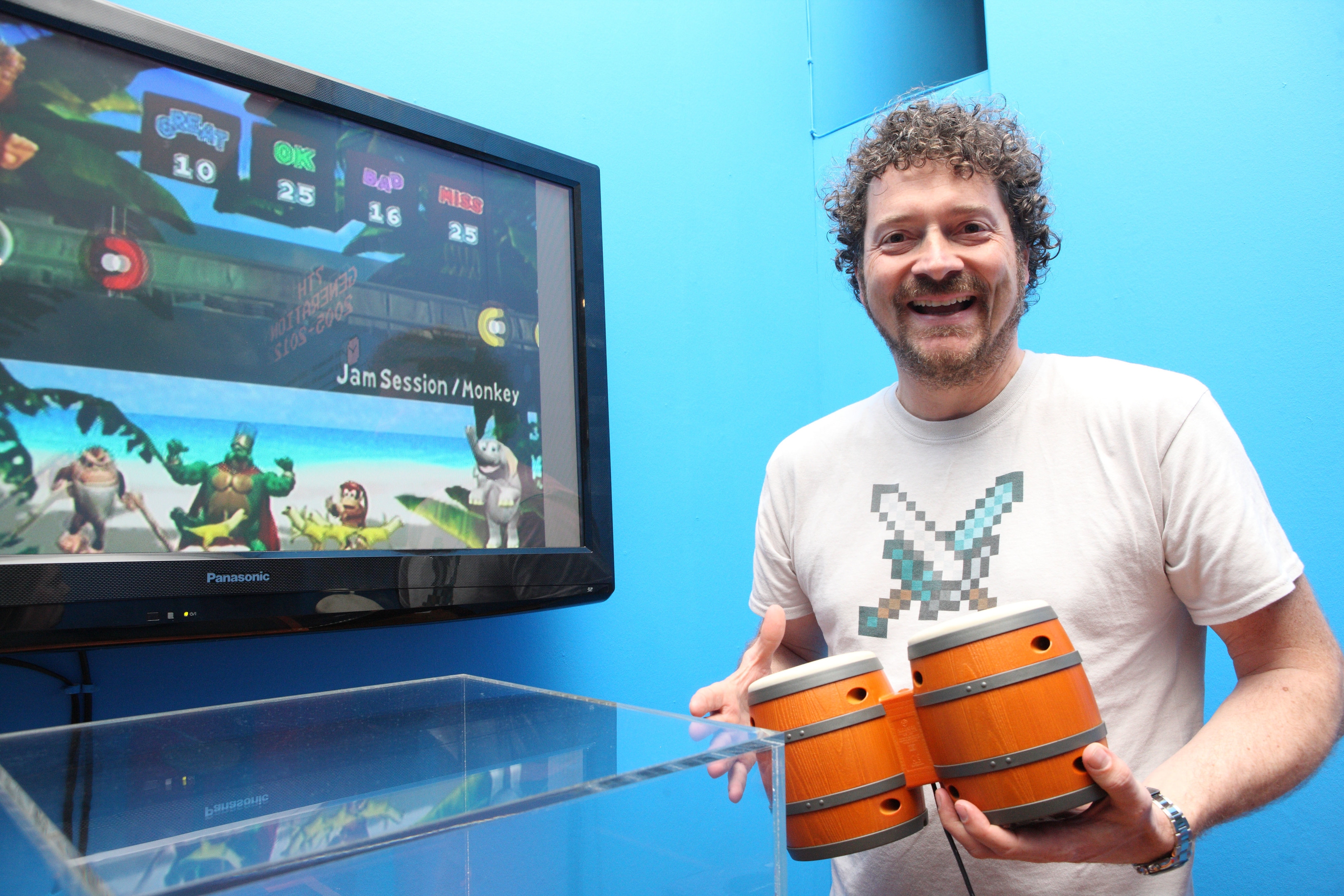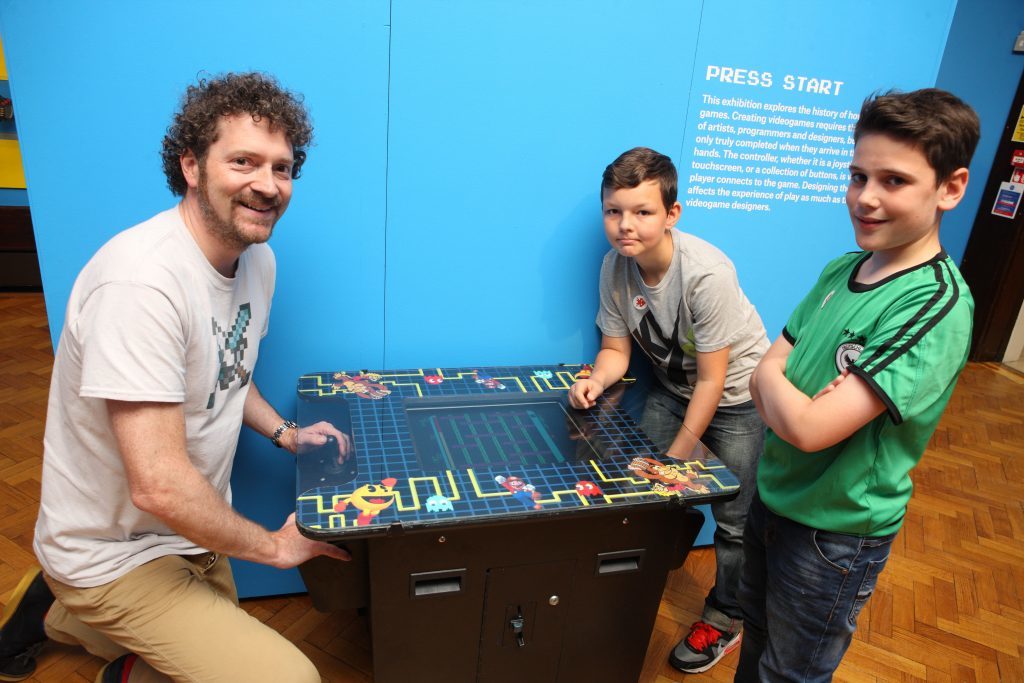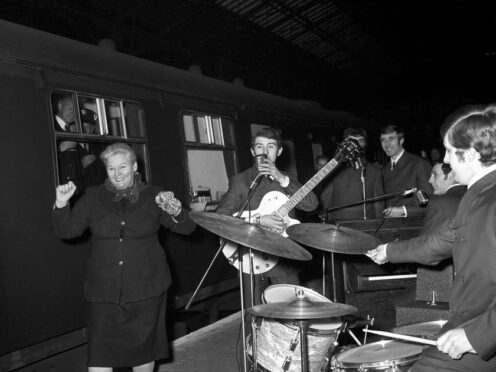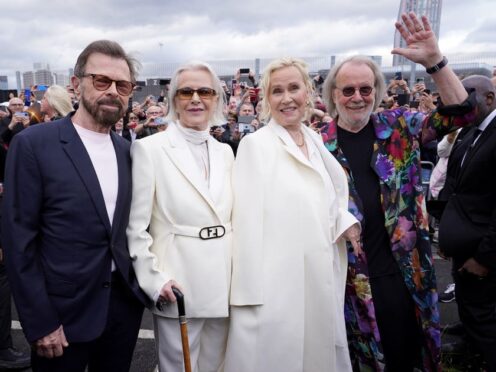Chris van der Kuyl is addressing a roomful of children in Perth. “Video games are big business,” he says. “Games are basically the only thing I do with my life. So for those of you who spend your time playing games there’s a future for you.”
Chris (46) is the man who developed console editions of Minecraft – one of the best selling video games of all time.
He goes on to outline to his audience just how lucrative the video games industry is: “If you look at a big Hollywood blockbuster it might take in several hundred million dollars over its opening weekend.
“Grand Theft Auto V made $5 billion in its first week. Big games are 10 times bigger than big movies. That’s also more than the entire music industry made in that year.
“Think of that. A single video game is bigger than the entire music industry. So if your parents ask what you’re doing playing games tell them you’re working.”
Chris is opening an exhibition of video games at Perth Museum & Art Gallery. Player: Videogame Interaction from Atari to Toys to Life is on until September 18.
It’s the latest exhibition to be launched by the newly formed Culture & Perth Kinross and probably the most interactive to date.
There is an array of video game consoles dating from the early 1980s to 2012. Early consoles like 1983’s Nintendo Entertainment System and Sega Master System (1985) are there.
There is the Game Boy, which was launched in 1989. Its tile-matching puzzle game Tetris became the bestselling game of all time and is now, oddly, being made into a trilogy of movies.
The early 1990s saw the Super Nintendo and Sega Megadrive dominate the video games market and in 1994 Sony waded into the sector with the first PlayStation.
I was a video games fanatic as a child and – aged 38 – find I can still defeat the end of level baddie on the Super Nintendo Starwing game, 25 years after I last played it.
At 46, Chris was also around during video games’ infancy. I manage to prise him away from a control pad for long enough to get a few words:
“I’ve got so many memories of video games when I was a kid,” he says. “My earliest experience was on the arcades, playing Space Invader and Asteroids.
“Video games taught me so much. I learned to code from the pages of computer games magazine. If you wanted to play more games you just had to learn how to code. That’s how it was. It’s becoming like that again now. You can lift chunks of code from the internet and create your own games.
“My best memory is Pong. I played it so much on I burned the pattern on my parents’ cathode ray tube television. My mum had to watch Coronation Street with all these white lines on the screen. She wasn’t best pleased with me…”
The era covered by the exhibition, when consoles became popular, was a game changer, Chris says.
“Consoles made games much more accessible. When I go back and play all the arcade games I loved as a kid the thing that strikes me is how hard they were. The makers wanted them to be difficult so you’d lose and put 10p in for another go.
“With consoles you owned the game so they could be much easier and you could progress through them more quickly. The multiplayer aspect – being able to play against your mates – gave them longevity and kept you coming back once you’d completed the main game.
“Games like Minecraft are ‘sandbox’ games where you’re creating everything from scratch. They’re only limited by your imagination so you never complete them in the traditional sense of the word.”
Old video games make Chris pleasantly nostalgic. “I keep a console library at home so I can look back at the sweep of video game history. I pull them out any play them every now and again. Some games haven’t aged well but a surprising amount – all the old Mario ones in particular – are still tremendous fun.
“These old games are like the smell and taste of particular foods. They takes me back to 30 or more years ago when I was a kid. I remember being blown away by the graphics and looking back now they were pretty basic.
“The same is true now about video games as was then, though: gameplay is king. It doesn’t matter how great the graphics are, if it’s not fun to play then it’s a flop.”











